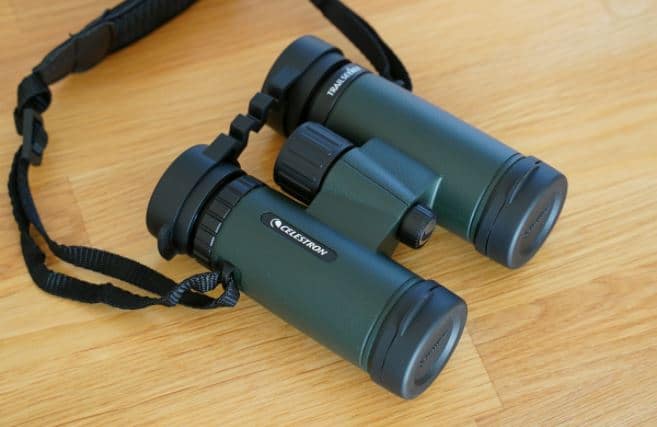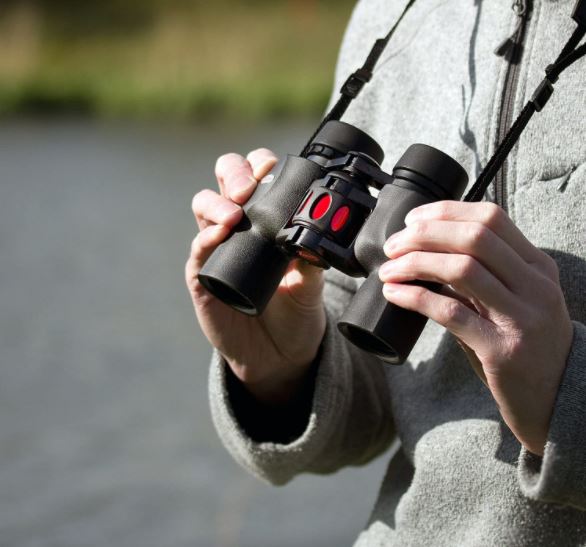Nothing is better than being able to view wildlife from a safe distance. Animals interact differently with one another when they do not think anyone is watching them. A nice set of binoculars are perfect for those who hunt and also for those who want to view wildlife without scaring the animals away. Binoculars are also used by those who want to stargaze. For some, it is easier to find constellations, stars, and planets with binoculars.
Binoculars are simply a tool to help enhance an experience. So much can be viewed up close through binoculars, and details you have never seen before will show more prominently. Many activities involve using binoculars, such as hunting, bird watching, whale watching, stargazing, and many more. A quality set of binoculars will last a lifetime if they are taken care of properly. Below are essential terms you should be familiar with when you go to buy a pair of binoculars. Finding the right brand can also be tricky, but luckily a list of quality brands is given below to help you find suitable binoculars.

Contents
Important Terms
- Field Of View is the width of the area you can see 1,000 yards from the end of your binoculars. The smaller the field of view, the higher the magnification power. If you’re using binoculars to look for something like a spotting game, a narrow field of view may limit your visibility to pick up on moving animals. While less detailed, whereas a wide field of view will help you get the info you need.
- Eye Relief is the distance between the eyes and the binoculars that lets you see the full view. Look for a more extensive eye relief to allow for more area between the glasses and the binoculars.
- Prisms flip the image right side up. Without prisms, pictures would come through upside down. Often result in large binoculars as the eyepiece is offset from the binocular tube; Porro prisms are inexpensive to make to allow room for prisms to flip the image on the way to your eye. Roof prisms make thinner binoculars, but they’re usually more expensive due to their more complex manufacturing, allowing the prism to be in line with the eyepiece and the binocular tube.
In a binocular size, the first number is the model’s magnification power. Therefore, if a pair of binoculars is 8×42, that means something that you view through the binoculars will seem eight times more close. The higher the number, the more amplified any movement becomes, like hands shaking.
The second number denotes the lens’s diameter, distant from the eyes to the face. The lens is 42mm across in a pair of binoculars listed as 8×42 as the wider lens can take in more light. More light provides a brighter view. If you use your binoculars in low-light conditions, like at dusk, night, or dawn, or if you use them to look up at the stars. Also, the wider the lens, the heavier, bigger, and more cumbersome the binoculars become.
Many types of binoculars come in a variety of lens diameters and magnification powers. There are various excellent binoculars mentioned below, but your intended uses will help you decide which specifications are best for you.
Celestron TrailSeeker Binoculars
This pair of Celestron Trailseeker 10×32 binoculars are premium quality binoculars at an affordable price. Superior coatings and optics allow for enhanced light transmission, creating brighter and sharper images. Improved resolution and contrast provide unique image detail to improve your wildlife viewing. Their lightweight and durable body make them perfect for birding, hiking, or any other activity where transportability is a factor.
Rugged magnesium alloy frames allow for a sleek design light in weight with the added waterproof feature. These ergonomically designed binoculars have ease of use with fit and function in mind, making them excellent for bird-watching trips.
Unique twist-up and multi-stop eyecups provide ease of use and comfort with or without glasses. This pair claims metal eyecups that offer longer life and correct positioning, which are more durable than plastic eyecups. Their expansive field of view makes them perfect for following moving points without needing to move your binoculars. The TrailSeeker binocular is also relatively light at 2 lbs.
Key Features:
-
- Magnification: 8x
- Angular field of view: 8.1 degrees
- Objective lens diameter: 1.7″ (42 mm)
- Eye relief: 0.7″ (17 mm)
- Bright images
- No fogging
- Wide field of view
Kowa YF30-6
Kowa’s YF30 is an outdoor binocular with a touch of style. Kowa’s YF30 series of binoculars offer 6x to 8x magnifications with a 30mm objective lens diameter. They’re not only waterproof but well suited to bad weather. They provide portability, weighing less than 500g each. The 6×30 option boasts a vast viewing field of 140m at 1000m, so you’ll be able to see a great deal without actually adjusting the position. The lenses are coated and offer good resistance to dirt, which makes these binoculars comfortable to maintain.
Key Features:
-
- Magnification: 6x
- Objective diameter: 30mm
- Field of view at 1000m: 140 meters
- Eye relief: 20mm
- Dimensions: 160x114x48mm
- Weight: 470g Closest focusing distance: 5 meters
- Wide viewing field
- Lightweight
- Thick rubber armor
- Waterproof




